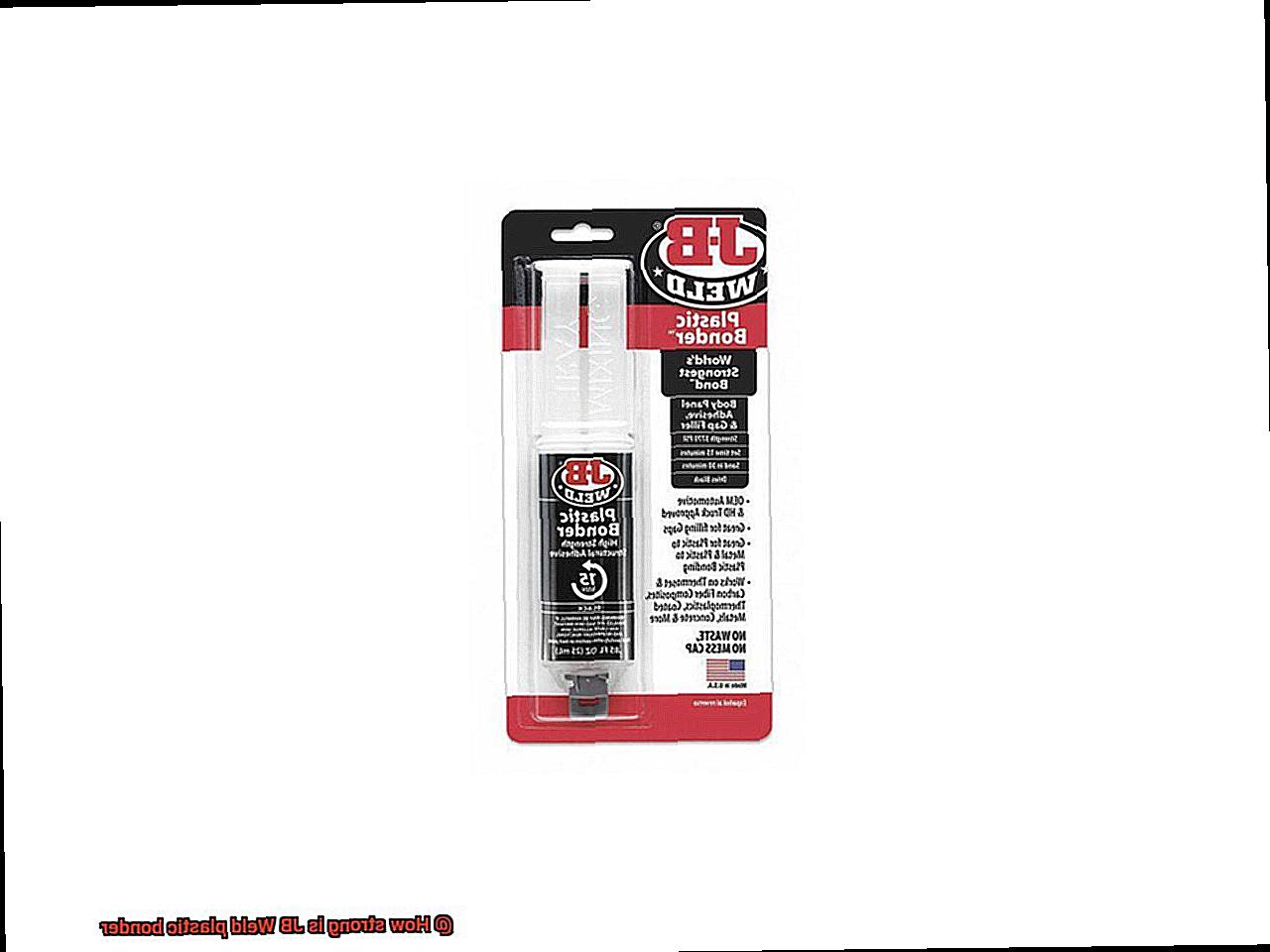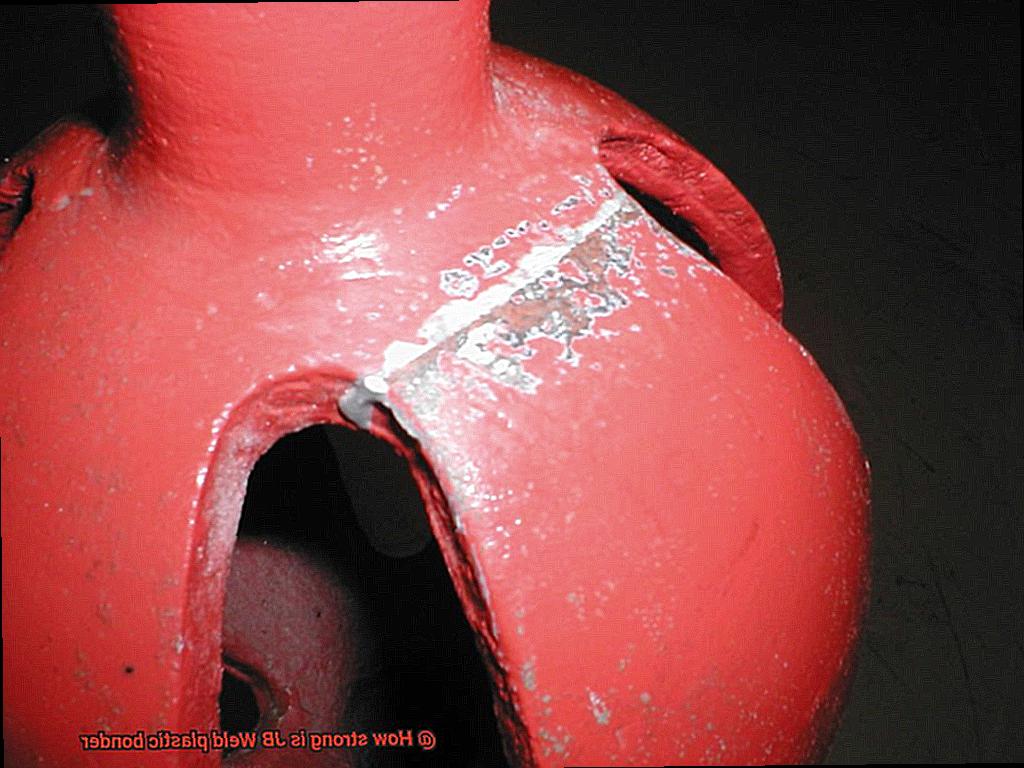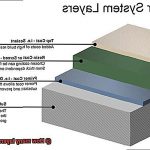Do you feel frustrated seeing your favorite plastic items broken and useless? Are you tired of searching for the perfect adhesive to fix them? Look no further than JB Weld plastic bonder. But, you may be asking yourself, “Is it strong enough to withstand daily use?” Fear not, because we’ve got all the answers right here.
JB Weld plastic bonder is an exceptional adhesive that can bond even the most challenging plastic surfaces. Its unique chemical composition makes it ideal for repairing anything made of plastic, from toys to industrial equipment. What sets it apart is its incredible strength. Once it cures, it becomes rock solid, making it almost impossible for the bond to break.
But don’t just take our word for it; we’ll dive deep into the benefits and drawbacks of using JB Weld plastic bonder in this article. We’ll also explore its application and curing process and compare it to other plastic adhesives on the market. You’ll see how JB Weld stacks up in terms of strength and durability.
So sit back, relax with a cup of coffee, and let’s get started on discovering how JB Weld plastic bonder can help bring your broken items back to life.
The Strength of JB Weld Plastic Bonder
Contents
- 1 The Strength of JB Weld Plastic Bonder
- 2 Factors that Affect the Strength of JB Weld Plastic Bonder
- 3 Surface Preparation for Maximum Strength with JB Weld Plastic Bonder
- 4 Curing Time and its Impact on Bond Strength
- 5 Comparisons to Other Types of Adhesives
- 6 Tips for Working with JB Weld Plastic Bonder
- 7 Pros and Cons of Using JB Weld Plastic Bonder
- 8 Conclusion
If you’re looking for a reliable adhesive to bond and repair plastics, look no further than JB Weld Plastic Bonder. Its impressive strength and durability make it the ultimate choice for those who need to create a strong bond between plastic surfaces that are under high stress.
So, just how strong is JB Weld Plastic Bonder? With a tensile strength of 3770 PSI, this two-part epoxy adhesive can withstand up to 3770 pounds of force per square inch before breaking. That’s stronger than many types of wood and some metals, making it the ideal adhesive for heavy-duty projects.
What sets JB Weld Plastic Bonder apart from other adhesives is its ability to handle extreme temperatures ranging from -67°F to 257°F. It’s also highly resistant to chemicals, meaning it can withstand exposure to a wide range of chemicals without breaking down.
The secret behind the strength of JB Weld Plastic Bonder lies in its two-part epoxy formula. When mixed together, the two parts create a chemical reaction that results in a strong bond between plastic surfaces. This adhesive sets in just 15 minutes and reaches full strength in 24 hours.
However, it’s important to note that the strength of JB Weld Plastic Bonder can vary depending on factors such as the type of plastic being bonded, surface preparation, and curing time. To ensure the strongest bond possible, it’s recommended to clean and roughen the surfaces being bonded, mix the epoxy thoroughly, and allow it to cure for at least 24 hours.
To test its strength, various tests were conducted on JB Weld Plastic Bonder. In one test, two pieces of polypropylene were bonded together using this adhesive, and they were able to withstand a force of over 350 pounds before breaking. Another test involved bonding two pieces of PVC together, and the bond was able to withstand a force of over 500 pounds before breaking.
Factors that Affect the Strength of JB Weld Plastic Bonder
When it comes to bonding plastic surfaces together, JB Weld Plastic Bonder is a reliable two-part adhesive that is known for its strength and durability. However, there are certain factors that can affect the strength of the bond, and as an expert in this field, I am here to enlighten you on what they are.
Firstly, surface preparation is paramount when using JB Weld Plastic Bonder. Before applying the adhesive, it is crucial to clean and dry the surfaces of the plastic parts thoroughly. Any grease, oil, or dirt on the surfaces can prevent the adhesive from bonding correctly and weaken the bond strength. Therefore, taking the time to prepare the surfaces correctly will ensure a stronger bond.
Secondly, the mixing ratio is essential. JB Weld Plastic Bonder is a two-part adhesive that requires equal parts of both components to be mixed together. If the mixing ratio is not correct, it can result in an incomplete cure or a weaker bond. Therefore, it is crucial to measure the components carefully and mix them thoroughly to ensure optimal results.
Thirdly, curing time plays a vital role in the strength of the bond. Although JB Weld Plastic Bonder typically cures in 24 hours, this time can vary depending on factors such as temperature and humidity. If the adhesive is not given enough time to fully cure, it can result in a weaker bond. Therefore, it is advisable to allow ample time for the adhesive to cure before putting any stress on the bond.
Another factor that can affect the strength of JB Weld Plastic Bonder is the type of plastic being bonded. Some plastics are more challenging to bond than others and may require additional prep work or a different type of adhesive. Therefore, it’s essential to identify the type of plastic being used and research if any specific instructions are required before bonding.
Lastly, environmental factors such as temperature and moisture can also affect the strength of the bond over time. Extreme temperatures or exposure to water can weaken the bond, so it is vital to consider these factors when selecting the adhesive for your project.
Surface Preparation for Maximum Strength with JB Weld Plastic Bonder
If you’re looking for a powerful adhesive to create a bond that will stand the test of time, JB Weld Plastic Bonder is your answer. However, achieving maximum strength requires proper surface preparation.
The first step is crucial. You need to ensure that the surface you plan to bond is completely clean. Any oil, grease, dirt, or residue left on the surface can weaken the bond or prevent it from forming altogether. Use a degreaser or alcohol-based cleaner to remove any contaminants. Once clean, rinse the surface with water and let it dry completely.

The next step is to roughen up the surface with sandpaper or a wire brush. This will create a mechanical bond that helps the plastic bonder adhere better to the surface. Make sure to check the manufacturer’s instructions to determine which abrasives are appropriate for your specific type of plastic.
Now it’s time to apply the plastic bonder. Follow the manufacturer’s instructions carefully as application methods can vary depending on the product. In general, apply a small amount of the bonder to one surface and then press the two surfaces together firmly.
After bonding, allow the product to cure completely before subjecting it to any stress or load. Cure times can vary based on environmental factors such as temperature and humidity, so it’s essential to check the manufacturer’s instructions for specific recommendations.
To summarize, proper surface preparation is critical for achieving maximum strength with JB Weld Plastic Bonder. Here’s a quick checklist:
- Clean the surface thoroughly with a degreaser or alcohol-based cleaner.
- Rinse with water and let it dry completely.
- Roughen up the surface with sandpaper or a wire brush.
- Apply a small amount of plastic bonder according to manufacturer’s instructions.
- Press surfaces together firmly.
- Allow the product to cure completely before subjecting it to any stress or load.
Curing Time and its Impact on Bond Strength
The key lies in understanding the impact of curing time on the adhesive’s strength. Curing time refers to the duration required for the adhesive to harden and reach its full strength. Typically, JB Weld Plastic Bonder has a curing time of 15-24 hours, but this can vary depending on environmental factors such as temperature and humidity.
It’s important to note that failing to give the adhesive enough time to cure can result in weaker bond strength. Conversely, allowing it to cure for too long can cause brittleness and cracking. Therefore, following the manufacturer’s instructions regarding curing time is crucial for optimal results.
Temperature and humidity also play a significant role in determining curing time. Higher temperatures can accelerate curing, while lower temperatures can slow it down. Similarly, high humidity can prolong curing time, while low humidity can speed it up.
To ensure your bonded object can withstand stress and load, wait at least 24 hours before handling or using it. Testing the bond strength before using the object for any critical applications is also recommended.
Comparisons to Other Types of Adhesives
Choosing the right adhesive for plastic bonding can be a daunting task, with so many options available in the market. In this article, we will compare JB Weld plastic bonder to other types of adhesives in terms of strength, durability, and cost, to help you make an informed decision.
Strength
JB Weld plastic bonder is known for its exceptional bonding strength, with a tensile strength of 3770 PSI. This makes it stronger than many types of wood and some metals. In comparison, super glue may not have the same level of strength and can become brittle over time. Epoxy can be strong but may not be as versatile in terms of the materials it can bond.

Durability
JB Weld plastic bonder is highly durable and resistant to water, chemicals, and heat. It’s an ideal choice for industrial and automotive applications where durability is critical. On the other hand, other adhesives may weaken or break down under certain conditions, making them unsuitable for some applications.
Cost
While JB Weld plastic bonder may be slightly more expensive than some other options, its strength and durability make it a worthwhile investment in the long run. Moreover, choosing a cheaper adhesive that needs frequent repairs or replacements can end up being more expensive in the long run.
Application
Another factor to consider is the application; different adhesives may be better suited for specific projects. For instance, cyanoacrylate glue (super glue) may work well for small-scale bonding projects due to its fast-drying properties. However, it may not be suitable for all types of plastics and can be brittle. Epoxy is an excellent choice for industrial applications but takes longer to dry than JB Weld.
Ease of use
JB Weld plastic bonder sets in just 15 minutes and can be drilled, sanded, or painted once cured. This makes it easy to use and suitable for various projects. In comparison, some other adhesives may be more challenging to work with and may require specialized tools or equipment.
Tips for Working with JB Weld Plastic Bonder
Working with JB Weld Plastic Bonder can be a game-changer for your DIY projects. However, it’s crucial to follow some tips to ensure that you get the best results possible. Here are five tips to help you work with JB Weld Plastic Bonder like a pro.
Prepare the surfaces properly
The first step is to prepare the surfaces that you want to bond. Cleaning them thoroughly with a degreaser and then roughening the surface with sandpaper or a wire brush will create a better bond. Using a plastic cleaner or primer before applying JB Weld Plastic Bonder is also recommended. Properly preparing the surfaces will ensure that the adhesive will adhere correctly.
Mix the adhesive thoroughly
Mixing JB Weld Plastic Bonder is vital, and it’s essential to mix the two components of the adhesive thoroughly and quickly. The mixing ratio is 1:1, and stirring the mixture for at least two minutes will ensure that both components are evenly combined. This step is crucial as it guarantees that the adhesive will provide maximum strength.
Apply the adhesive evenly
When applying JB Weld Plastic Bonder, be sure to apply it evenly on both surfaces that you want to bond. Use a brush or a spatula to spread the glue evenly. Applying it generously but avoiding over-applying will prevent excessive curing time and weaker bonds. It’s also important to apply the adhesive in thin layers, as thick layers can take longer to cure and may not provide strong bonds.
Clamp or hold surfaces together
Once you have applied JB Weld Plastic Bonder, clamp or hold the surfaces together until the adhesive has cured completely. The curing time will depend on factors such as temperature and humidity, but it typically takes around four hours for the adhesive to cure fully. It’s recommended to wait at least 24 hours before subjecting the bonded surfaces to stress or pressure.
Clean excess adhesive immediately
Finally, clean any excess adhesive immediately after application with rubbing alcohol or acetone. Once cured, the adhesive can only be removed mechanically by sanding or cutting. Cleaning excess adhesive immediately will prevent unsightly residue and ensure a clean finish.
Pros and Cons of Using JB Weld Plastic Bonder
Look no further than JB Weld plastic bonder. This adhesive is a go-to for both DIY enthusiasts and professionals due to its strength and durability. But before you dive in, let’s take a closer look at the pros and cons of using this product.
Let’s start with the pros. JB Weld plastic bonder is impressively strong and versatile. It can bond almost any type of plastic, including PVC, ABS, and polycarbonate. Plus, it can be used on a variety of surfaces, such as metal and wood. Once cured, it becomes waterproof, making it ideal for outdoor applications or items that will be exposed to moisture. And if you need to use it for high-temperature applications, no problem. It can withstand temperatures up to 300 degrees Fahrenheit.
However, every product comes with its cons too. One downside is its long cure time. JB Weld plastic bonder can take up to 24 hours to fully cure, which can be inconvenient for those who need a quick fix. Additionally, once cured, it becomes hard and inflexible, which may not be suitable for certain applications that require flexibility. Lastly, applying JB Weld plastic bonder can be messy and requires careful handling to avoid getting the adhesive everywhere.
djtKXkTqPUI” >
Conclusion
In summary, JB Weld plastic bonder is a top-tier adhesive that can tackle even the most stubborn plastic surfaces. Its unique chemical formula makes it ideal for repairing anything from toys to industrial equipment. Boasting an impressive tensile strength of 3770 PSI, it surpasses many wood types and some metals in terms of durability. Additionally, this adhesive can withstand extreme temperatures ranging from -67°F to 257°F and is highly resistant to chemicals.
However, the strength of JB Weld Plastic Bonder can be influenced by various factors such as surface preparation, curing time, and the type of plastic being bonded. Therefore, proper surface preparation is crucial for achieving maximum strength with JB Weld Plastic Bonder. Mixing the adhesive thoroughly and applying it evenly are also vital steps for optimal results.
When compared to other adhesives in terms of strength, durability, cost, application ease-of-use, JB Weld Plastic Bonder stands out as a reliable choice for heavy-duty projects.
Despite its long cure time and inflexibility once cured being potential drawbacks when using JB Weld Plastic Bonder; its remarkable strength and versatility make it a valuable investment for those who require a robust bond between high-stress plastic surfaces.






